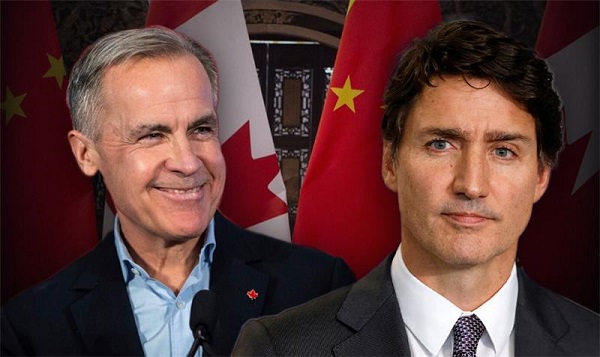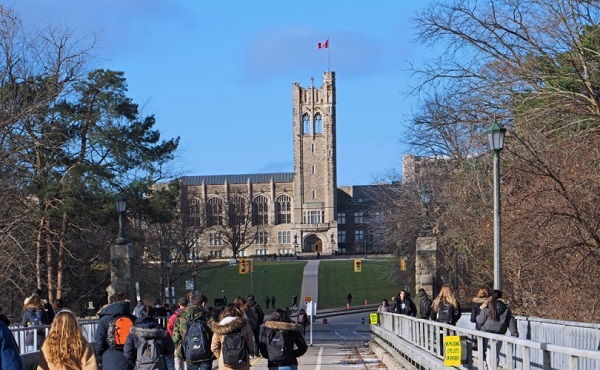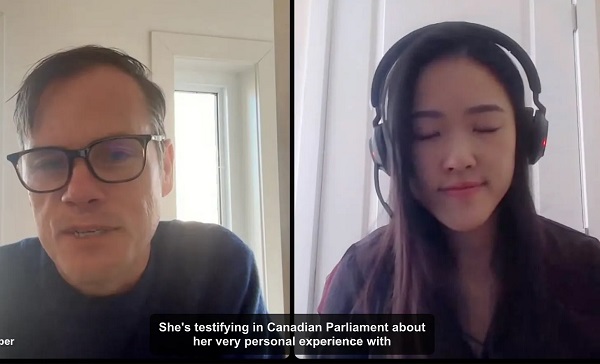Business
‘The DNA Of Our Foreign Policy’: How USAID Hid Behind Humanitarianism To Export Radical Left-Wing Priorities Abroad
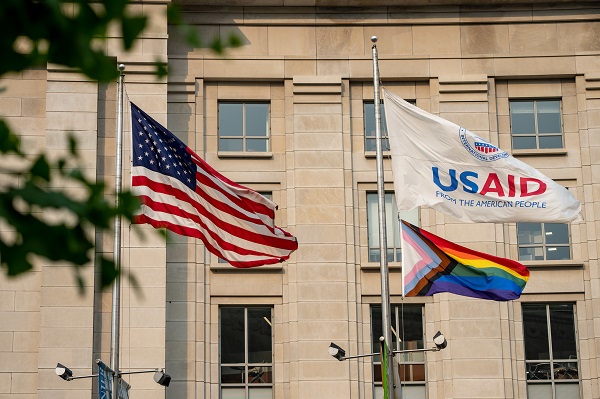

From the Daily Caller News Foundation
By Thomas English
Behind the veil of humanitarian aid, the U.S. Agency for International Development (USAID) doled out billions in taxpayer dollars to engage in left-wing social engineering abroad — from rampant LGBT advocacy to diversity, equity and inclusion (DEI) programs and tech censorship.
President John F. Kennedy established USAID in 1961 to, in his words, “provide generously of our skills, and our capital and our food to assist the peoples of the less-developed nations to reach their goals in freedom.” The agency, though, has reinterpreted Kennedy’s mission statement to mean that Ecuador suffers from a lack of drag shows, that Peruvian comic books are too light on transgender representation, that the Serbian workplace is insufficiently welcoming to the homosexual community — while also offering social media platforms a host of creative tactics to suppress those who disagree with USAID’s social agenda.
“It’s probably one out of every three grants is totally insane left-wing nonsense … USAID has always been somewhat left, but when the Biden administration started, you can clearly see a huge uptick in spending,” Parker Thayer, who researches federal spending at Capital Research Center, told the Daily Caller News Foundation. “The amount of lunatic, fringe grants goes up dramatically. For example, if you go to USAspending[.gov] and search for the keyword ‘transgender,’ the graph is basically a vertical line when you hit 2021. It’s kind of remarkable.”
He also emphasized his discovery of a $13 million grant for an Arabic-language translation of “Sesame Street,” calling it “something else, man.”
Other programs include a $2 million grant for funding sex-change procedures in Guatemala, $500,000 for LGBT inclusion in Serbian workplaces, $70,000 for a DEI-themed musical in Ireland, a transgender clinic in Vietnam, a similar clinic in India, $46,000 in HIV care for transgender South Africans, $1.5 million more for South African children to “learn through play,” $20,000 Bulgarians to enjoy a vaguely-defined “LGBT-related event” — programs for which former USAID Administrator Samantha Power said “a big pot of money” wasn’t enough.
These and other programs were the vehicle through which Power went about “working LGBT rights into the DNA of our foreign policy,” a priority she emphasized to Harvard students in 2015 during her tenure as U.S. Ambassador to the United States.
“One of the most common complaints you will get if you go to embassies around the world — from State Department officials and ambassadors and the like — is that USAID is not only not cooperative; they undermine the work that we’re doing in that country,” Secretary of State Marco Rubio, who assumed control over USAID on Monday, said. He condemned the agency’s more questionable programs as not only a waste of taxpayer dollars, but a diplomatic liability.
“They are supporting programs that upset the host government for whom we’re trying to work with on a broader scale,” he said.
Beyond pro-LGBT funding, former President Joe Biden’s USAID offered social media platforms a “disinformation primer,” a 100-page document providing guidance for countering “disinformation” through increased fact-checking and censorship — policies it said would make platforms more “democratically accountable.”
The document credits some of its content suppression tactics to the Global Engagement Center (GEC), a now-defunct agency that operated under the State Department. To “counter disinformation,” GEC recommended ginning up “moral outrage” against content that “violates [the] sacred value” of what it considers “the truth.”
Biden seemed to heed GEC’s guidance on moral outrage during the height of the pandemic in 2021, accusing Facebook of “killing people” by insufficiently censoring anti-vaccine content on the platform. Facebook founder Mark Zuckerberg recalled during his Jan. 10 appearance on “The Joe Rogan Experience” an instance when the Biden administration pressured him to censor a satirical meme about vaccine side effects. Biden later walked back his accusation against Facebook in an interview with CNN.
The USAID-funded primer also recommended “advertiser outreach,” a strategy that would financially throttle agency-disfavored informational outlets by informing advertisers of potential damage to brand reputation.
“[Advertisers] inadvertently are funding and amplifying platforms that disinform. Thus, cutting this financial support found in the ad-tech space would obstruct disinformation actors from spreading messaging online,” the Disinformation Primer reads. “Efforts have been made to inform advertisers of their risks, such as the threat to brand safety by being placed next to objectionable content.”
The document further characterized the legacy media’s recent decline “leading to a loss of information integrity,” which thereby justifies USAID’s efforts to combat those “casting doubt on media.”
“It leads to a loss of information integrity. Online news platforms have disrupted the traditional media landscape. Government officials and journalists are not the sole information gatekeepers anymore … Because traditional information systems are failing, some opinion leaders are casting doubt on media, which, in turn, impacts USAID programming and funding choices,” the document continued.
USAID also faced intense congressional scrutiny in 2023 after allegations emerged that its PREDICT program and subsequent grants to EcoHealth Alliance potentially funneled U.S. taxpayer funds into gain-of-function coronavirus research at the Wuhan Institute of Virology — which raised questions about USAID’s possible role in contributing to the origins of the COVID-19 pandemic.
Republican Kentucky Sen. Rand Paul complained that USAID refused to hand over documents pertaining to the allegations and the agency’s funding habits.
“The response I got from your agency was: ‘USAID will not be providing any documents at this time.’ They’re just unwilling to give documents on scientific grant proposals — we’re paying for it, they’re asking for $745 million more in money. We get no response,” Rand said. “We’re not asking for classified information. We’re not asking for anything unusual. 20 million people died around the world … and you won’t give us the basic information about what grants you’re funding — should we be funding the Academy of Military Medical Research in China?”
Secretary of State Marco Rubio echoed Rand’s transparency concerns after announcing he was the USAID’s new acting director Monday, calling the agency “completely uncooperative.”
“They’re one of the most suspicious federal agencies that exists,” Thayer told the DCNF, suggesting the agency’s reputation for being opaque is justified. “It’s kind of a character trait for USAID to be less than transparent.”
Thayer explained that, in his research, USAID is selective in its transparency. The grants he called “complete nonsense,” such as the “Sesame Street” translation, “are very specific about what they’re doing. And the ones that are vaguely humanitarian-sounding are usually written like someone put a sociology textbook through a word randomizer then just took whatever it spat out and put it on the page. They are so full of jargon words that they’re basically incomprehensible, even to people who understand what the jargon words are supposed to mean.”
“I got $1.1 million for a study of youth rural migration in Morocco,” he added. “I literally — I cannot help you in understanding what that could possibly mean. I have no idea what that means.”
Elon Musk, the leader of the Department of Government Efficiency (DOGE), claimed that he and President Donald Trump agreed to shutter the agency entirely during an X Spaces conversation early Monday morning. Rubio emphasized in a Tuesday interview with Fox News that he does not intend to “get rid of foreign aid,” but is considering whether USAID ought to be housed under State Department or remain an autonomous agency.
“This is not about getting rid of foreign aid,” Rubio said. “There are things we do through USAID that we should continue to do, that make sense. And we’ll have to decide: Is that better through the State Department, or is that better through a reformed USAID? That’s the process we’re working through … but they’re completely uncooperative. We had no choice but to take dramatic steps to bring this thing under control.”
Alberta
Made in Alberta! Province makes it easier to support local products with Buy Local program
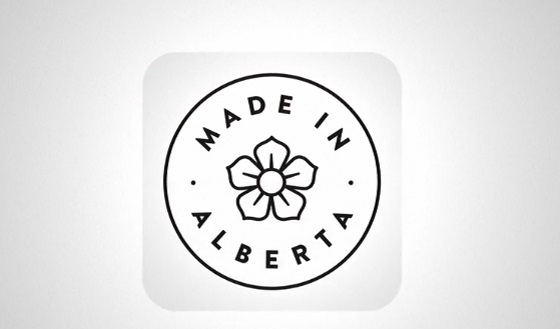
Show your Alberta side. Buy Local. |
When the going gets tough, Albertans stick together. That’s why Alberta’s government is launching a new campaign to benefit hard-working Albertans.
Global uncertainty is threatening the livelihoods of hard-working Alberta farmers, ranchers, processors and their families. The ‘Buy Local’ campaign, recently launched by Alberta’s government, encourages consumers to eat, drink and buy local to show our unified support for the province’s agriculture and food industry.
The government’s ‘Buy Local’ campaign encourages consumers to buy products from Alberta’s hard-working farmers, ranchers and food processors that produce safe, nutritious food for Albertans, Canadians and the world.
“It’s time to let these hard-working Albertans know we have their back. Now, more than ever, we need to shop local and buy made-in-Alberta products. The next time you are grocery shopping or go out for dinner or a drink with your friends or family, support local to demonstrate your Alberta pride. We are pleased tariffs don’t impact the ag industry right now and will keep advocating for our ag industry.”
Alberta’s government supports consumer choice. We are providing tools to help folks easily identify Alberta- and Canadian-made foods and products. Choosing local products keeps Albertans’ hard-earned dollars in our province. Whether it is farm-fresh vegetables, potatoes, honey, craft beer, frozen food or our world-renowned beef, Alberta has an abundance of fresh foods produced right on our doorstep.
Quick facts
- This summer, Albertans can support local at more than 150 farmers’ markets across the province and meet the folks who make, bake and grow our food.
- In March 2023, the Alberta government launched the ‘Made in Alberta’ voluntary food and beverage labelling program to support local agriculture and food sectors.
- Through direct connections with processors, the program has created the momentum to continue expanding consumer awareness about the ‘Made in Alberta’ label to help shoppers quickly identify foods and beverages produced in our province.
- Made in Alberta product catalogue website
Related information
2025 Federal Election
ASK YOURSELF! – Can Canada Endure, or Afford the Economic Stagnation of Carney’s Costly Climate Vision?

From Energy Now
By Tammy Nemeth and Ron Wallace
Carney’s Costly Climate Vision Risks Another “Lost Liberal Decade”
A carbon border tax isn’t the simple offset it’s made out to be—it’s a complex regulatory quagmire poised to reshape Canada’s economy and trade. In its final days, the Trudeau government made commitments to mandate climate disclosures, preserve carbon taxes (both consumer and industrial) and advance a Carbon Border Adjustment Mechanism (CBAM). Newly minted Prime Minister Mark Carney, the godfather of climate finance, has embraced and pledged to accelerate these commitments, particularly the CBAM. Marketed as a strategic shift to bolster trade with the European Union (EU) and reduce reliance on the U.S., a CBAM appears straightforward: pay a domestic carbon price, or face an EU import fee. But the reality is far more extensive and invasive. Beyond the carbon tariffs, it demands rigorous emissions accounting, third-party verification and a crushing compliance burden.
Although it has been little debated, Carney’s proposed climate plan would transform and further undermine Canadian businesses and the economy. Contrary to Carney’s remarks in mid-March, the only jurisdiction that has implemented a CBAM is the EU, with implementation not set until 2026. Meanwhile, the UK plans to implement a CBAM for 1 January 2027. In spite of Carney’s assertion that such a mechanism will be needed for trade with emerging Asian markets, the only Asian country that has released a possible plan for a CBAM is Taiwan. Thus, a Canadian CBAM would only align Canada with the EU and possibly the UK – assuming that those policies are implemented in face of the Trump Administrations’ turbulent tariff policies.
With the first phase of the EU’s CBAM, exporters of cement, iron and steel, aluminum, fertiliser, electricity and hydrogen must have paid a domestic carbon tax or the EU will charge more for those imports. But it’s much more than that. Even if exporting companies have a domestic carbon tax, they will still have to monitor, account for, and verify their CO2 emissions to certify the price they have paid domestically in order to trade with the EU. The purported goal is to reduce so-called “carbon leakage” which makes imports from emission-intensive sectors more costly in favour of products with fewer emissions. Hence, the EU’s CBAM is effectively a CO2 emissions importation tariff equivalent to what would be paid by companies if the products were produced under the EU’s carbon pricing rules under their Emissions Trading System (ETS).
While that may sound simple enough, in practice the EU’s CBAM represents a significant expansion of government involvement with a new layer of bureaucracy. The EU system will require corporate emissions accounting of the direct and indirect emissions of production processes to calculate the embedded emissions. This type of emissions accounting is a central component of climate disclosures like those released by the Canadian Sustainability Standards Board.
Hence, the CBAM isn’t just a tariff: It’s a system for continuous emissions monitoring and verification. Unlike traditional tariffs tied to product value, the CBAM requires companies exporting to the EU to track embedded emissions and submit verified data to secure an EU-accredited verification. Piling complexity atop cost, importers must then file a CBAM declaration, reviewed and certified by an EU regulatory body, before obtaining an import certificate.
This system offers little discernible benefit for the environment. The CBAM ignores broader environmental regulatory efforts, fixating solely on taxation of embedded emissions. For Canadian exporters, Carney’s plan would impose an expensive, intricate web of compliance monitoring, verification and fees accompanied by uncertain administrative penalties.
Hence, any serious pivot to the EU to offset trade restrictions in the U.S. will require a transformation of Canada’s economy, one with a questionable return on investment. Carney’s plan to diversify and accelerate trade with the EU, whose economies are increasingly shackled with burdensome climate-related policies, ignores the potential of successful trade negotiations with the U.S., India or emerging Asian countries. The U.S., our largest and most significant trading partner, has abandoned the Paris Climate Agreement, ceased defence of its climate-disclosure rule and will undoubtedly be seeking fewer, not more, climate-related tariffs. Meanwhile, despite rulings from the Supreme Court of Canada, Carney has doubled down on his support for the Trudeau governments’ Impact Assessment Act (Bill C-69) and confirmed intentions to proceed with an emissions cap on oil and gas production. Carney’s continuance of the Trudeau governments’ regulatory agenda combined with new, proposed trade policies will take Canada in directions not conducive to future economic growth or to furthering trade agreements with the U.S.
Canadians need to carefully consider whether or not Canada can endure, or afford, Carney’s costly climate vision that risks another “lost Liberal decade” of economic stagnation?
Tammy Nemeth is a U.K.-based strategic energy analyst.
Ron Wallace is an executive fellow of the Canadian Global Affairs Institute and the Canada West Foundation.
-
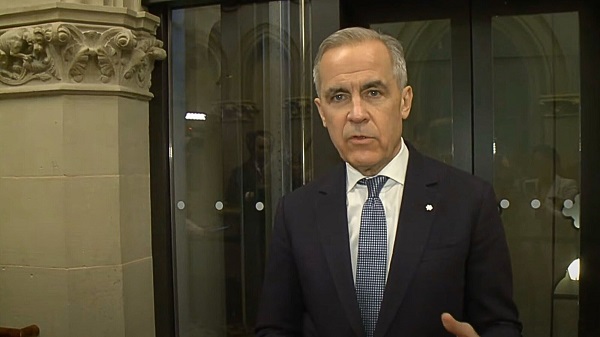
 2025 Federal Election1 day ago
2025 Federal Election1 day agoMark Carney Vows Internet Speech Crackdown if Elected
-
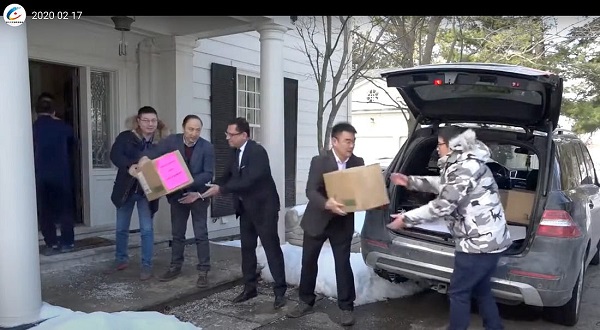
 2025 Federal Election21 hours ago
2025 Federal Election21 hours agoPPE Videos, CCP Letters Reveal Pandemic Coordination with Liberal Riding Boss and Former JCCC Leader—While Carney Denies Significant Meeting In Campaign
-
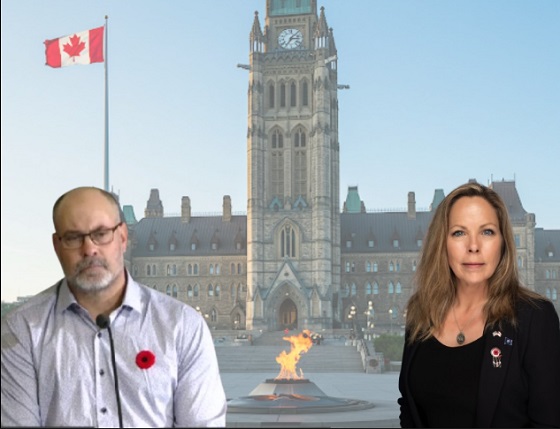
 Freedom Convoy2 days ago
Freedom Convoy2 days agoA Miscarriage of Justice
-

 2025 Federal Election11 hours ago
2025 Federal Election11 hours agoASK YOURSELF! – Can Canada Endure, or Afford the Economic Stagnation of Carney’s Costly Climate Vision?
-
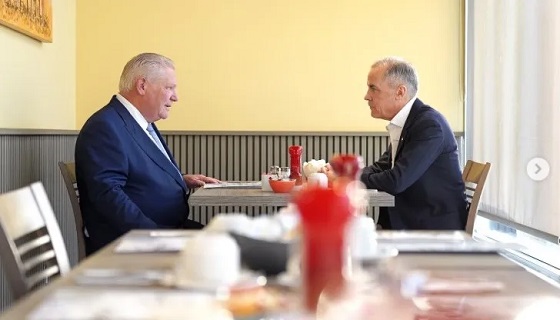
 2025 Federal Election1 day ago
2025 Federal Election1 day agoTrudeau and Carney Have Blown $43B on EVs
-
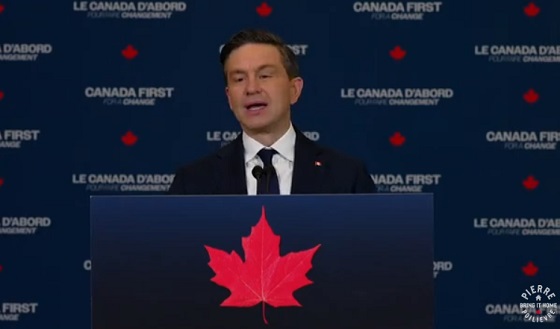
 2025 Federal Election1 day ago
2025 Federal Election1 day agoPoilievre will make it harder for politicians to boost their portfolios, close Carney loopholes
-
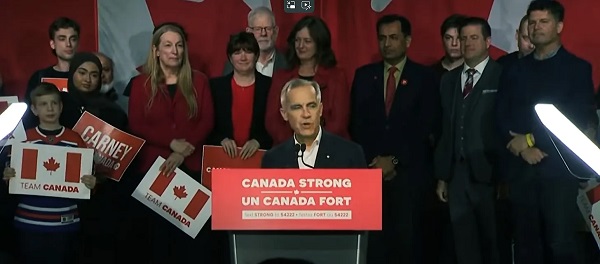
 2025 Federal Election2 days ago
2025 Federal Election2 days agoMark Carney To Ban Free Speech if Elected
-
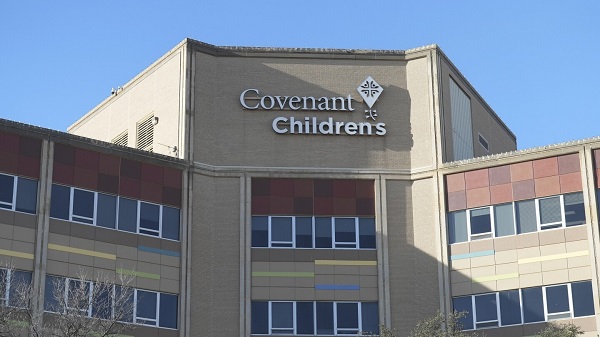
 Health1 day ago
Health1 day agoExpert Medical Record Reviews Of The Two Girls In Texas Who Purportedly Died of Measles




